PARKS PERIL
More money, better leadership, trained staff: How to prevent SA’s provincial wildlife gems from sliding into ruin
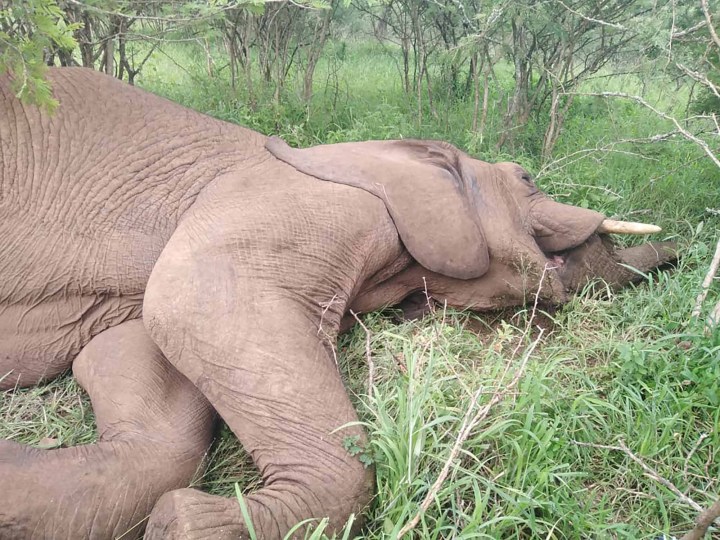
On paper, there are more than 400 provincial parks and reserves covering over three million hectares in South Africa. Though they are not as big or as well-known as the Kruger or Addo Elephant national parks, these reserves nevertheless play a vital role in holding together the increasingly tattered web of nature in an era of unprecedented human expansion.
Some, like the 96,000-hectare Hluhluwe-iMflolozi Park in KwaZulu-Natal, are among the oldest formally protected wildlife reserves in the world. Others, covering just a few hectares, were set up to protect a critically endangered plant or small animal species.
But many are now falling apart slowly because of a shortage of money, poor management or a lack of political will.
That is the essence of a new expert conservation assessment by the Endangered Wildlife Trust (EWT) with support from the Wildlife and Environment Society of South Africa. It cautions that these critical natural assets cannot be allowed to become “paper parks” – meaning that they exist as areas of conservation on paper only.
Entitled, The State of Provincial Reserves in South Africa – Challenges and Recommendations, the report highlights growing concern by conservation experts that several of these provincial reserves are “not fulfilling their conservation objectives”.
Here are just a few examples from KwaZulu-Natal:
In the Ntsikeni Vlei Nature Reserve – an internationally recognised mountain wetland – there are now more than 1,000 livestock roaming the park. It has a single field ranger to patrol 9,200ha, trying to prevent livestock incursions and curb the poaching of up to four wildebeest a week.
The Blinkwater Nature Reserve north of Pietermaritzburg has had no staff for 15 years. This 742ha island of natural vegetation is almost surrounded by alien plantation forests and its future is now threatened by illegal grazing and poaching.
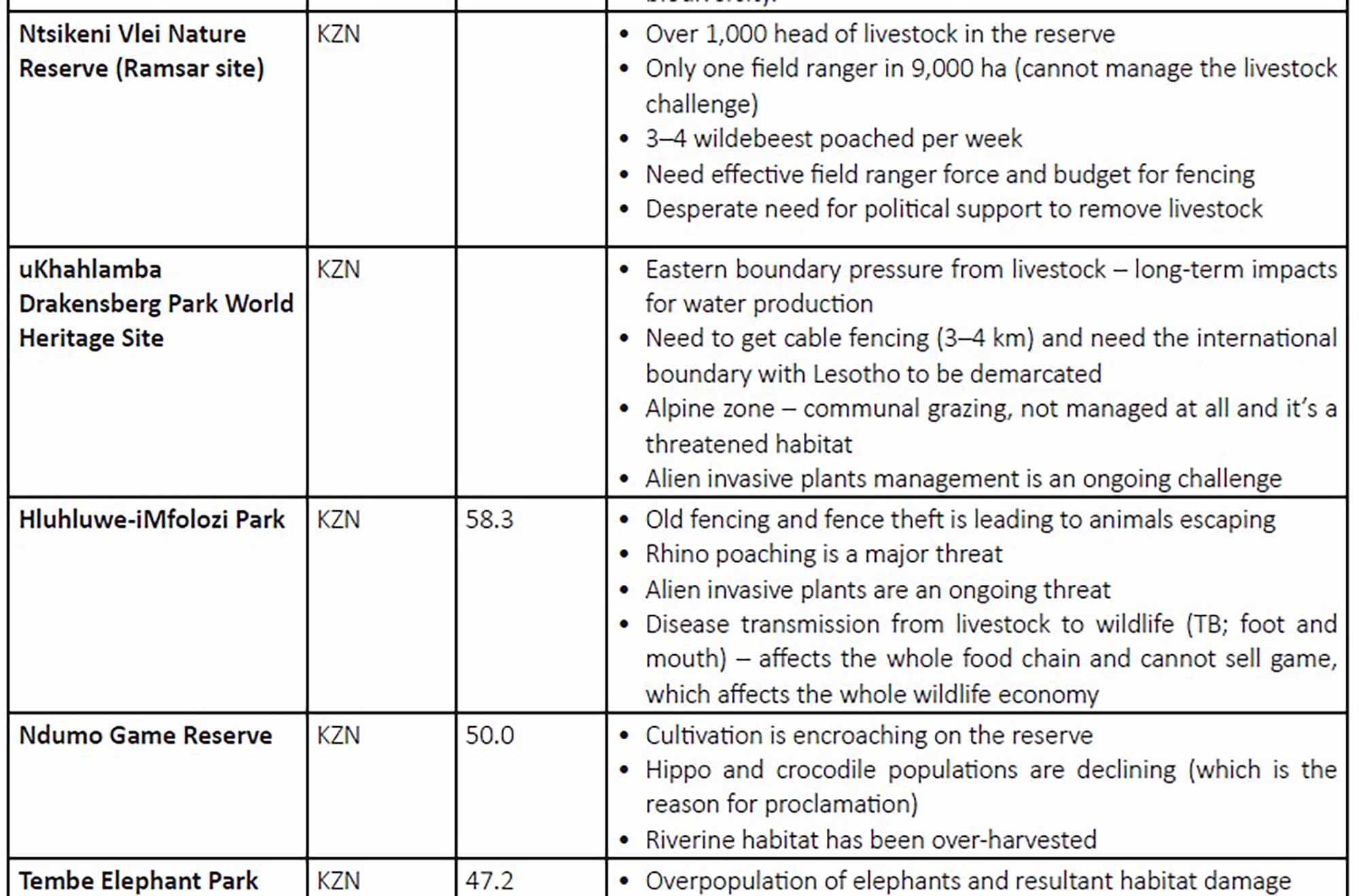
Examples of some of the problems in KZN provincial reserves. (Table: EWT report)
In the uKhahlamba-Drakensberg Park, the eastern boundaries of this World Heritage Site are also under pressure from similar livestock incursions as well as alien invader plant infestation.
More than 600ha of land in the Ndumo Game Reserve has been planted with cabbages and other vegetables, while the reserve’s hippo and crocodile population is in decline due to poaching and habitat loss.
But most worrisome, perhaps, is the steady decline of the Hluhluwe-iMflozi Park, the province’s flagship Big Five Reserve that was proclaimed in 1875 — just three years after the Yellowstone National Park in the US.
It is from the surviving population of about 100 southern white rhinos in this provincial park that the entire population of white rhinos in SA’s Kruger Park and other parts of the continent was gradually rebuilt.
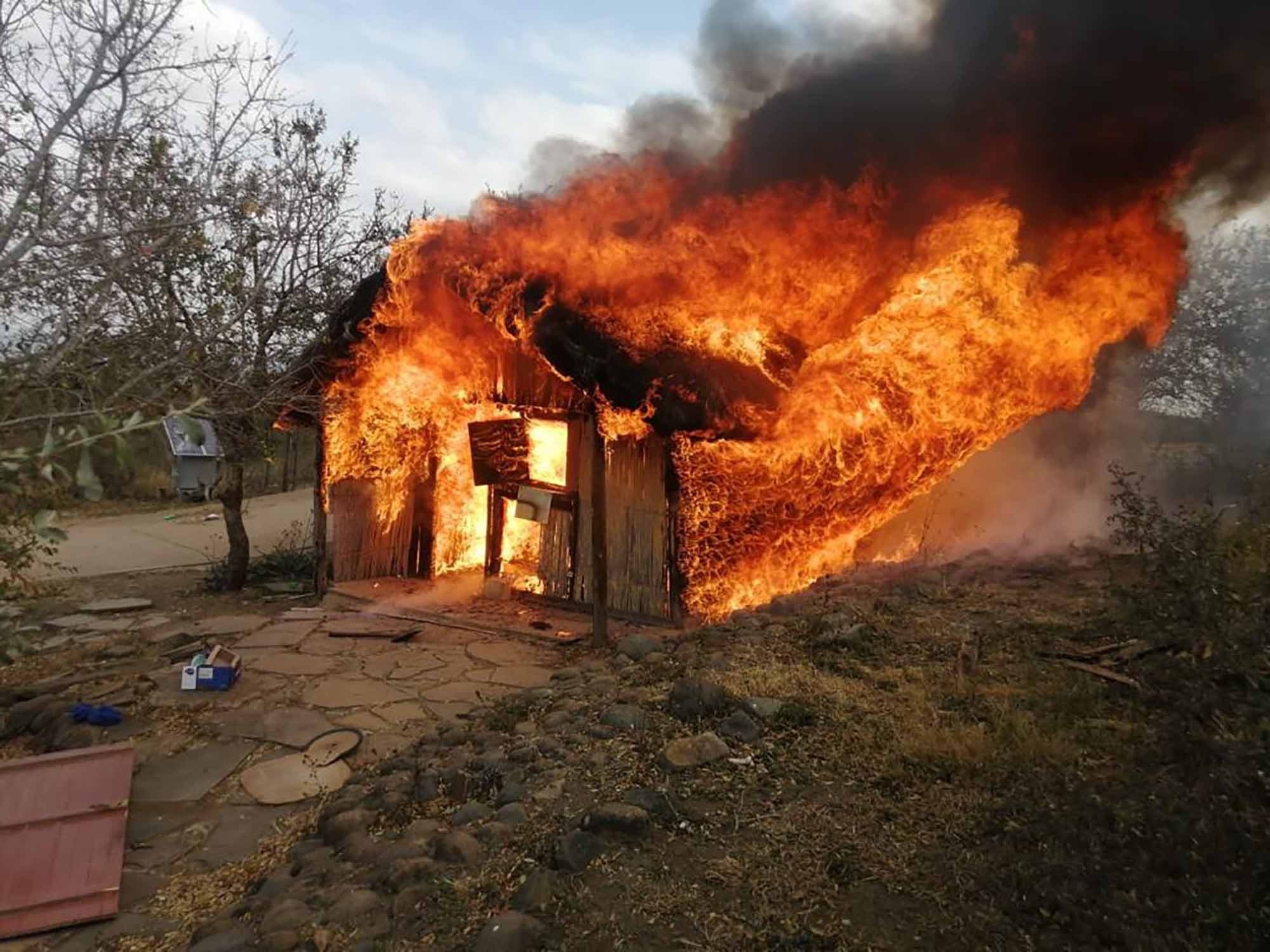
A guard hut at the Cengeni entrance gate to the Hluhluwe-iMfolozi Park burns out of control in August 2022 after angry neighbours set it alight after several lions and other dangerous wildlife species escaped via the park’s crumbling perimeter fences. (Photo: Ezemvelo KZN Wildlife)
According to the EWT report, there has been an explosion in human-wildlife conflict around the park due to collapsing fences. Rhino poaching remains “rampant” and basic infrastructure is falling apart due to a lack of maintenance.
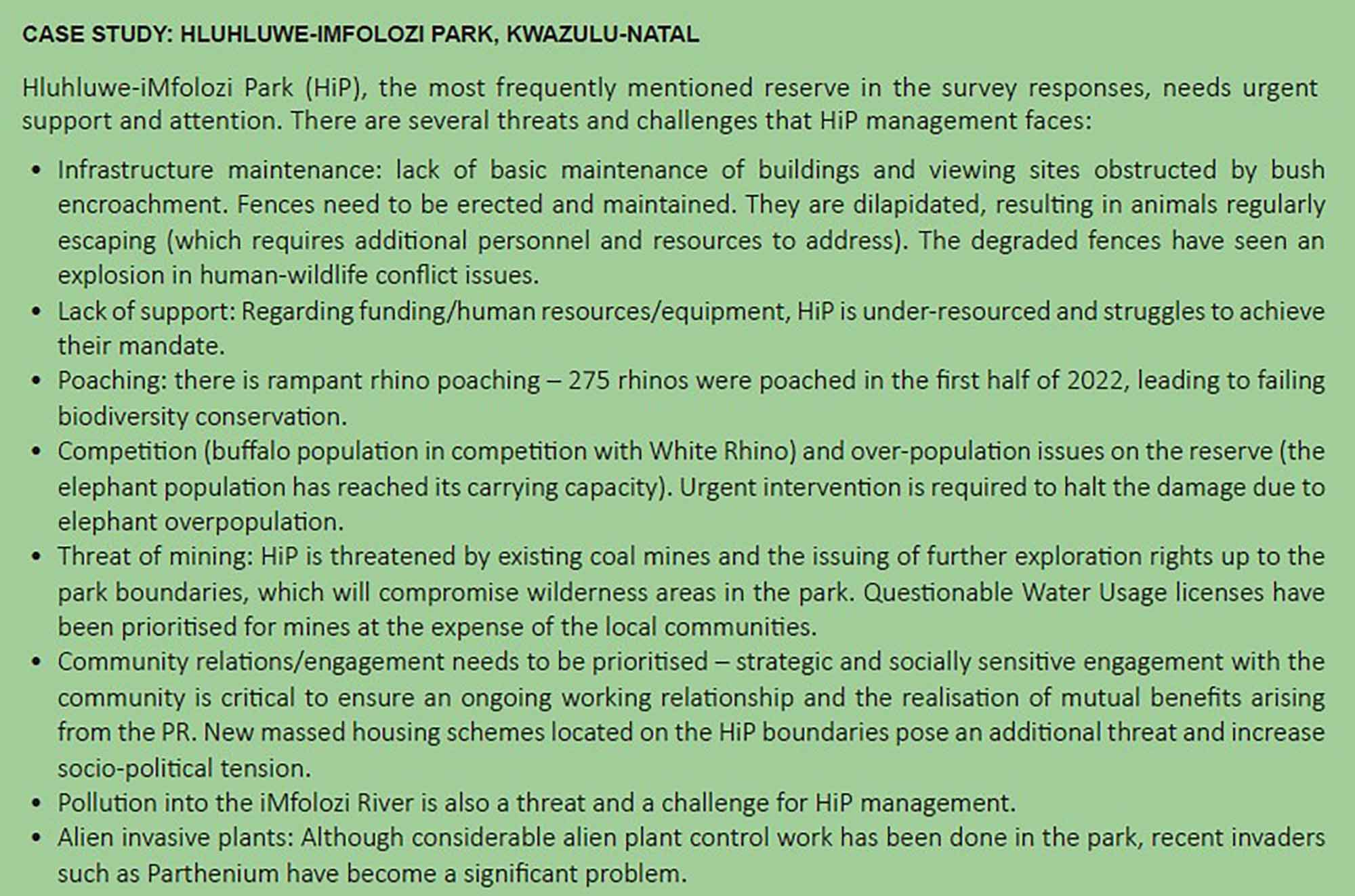
HIP Case Study screenshot from the new Endangered Wildlife Trust report.
The EWT identifies similar problems in other provinces. In the Pilanesberg Game Reserve in North West, most of the declining budget is spent on staff and officials, with almost no funds left for day-to-day operational needs and conservation.
In the Hans Merensky Nature Reserve in Limpopo, the population of increasingly threatened sable antelope is declining, while a large section of the Songimvelo Game Reserve in Mpumalanga has been abandoned and “poached empty”.
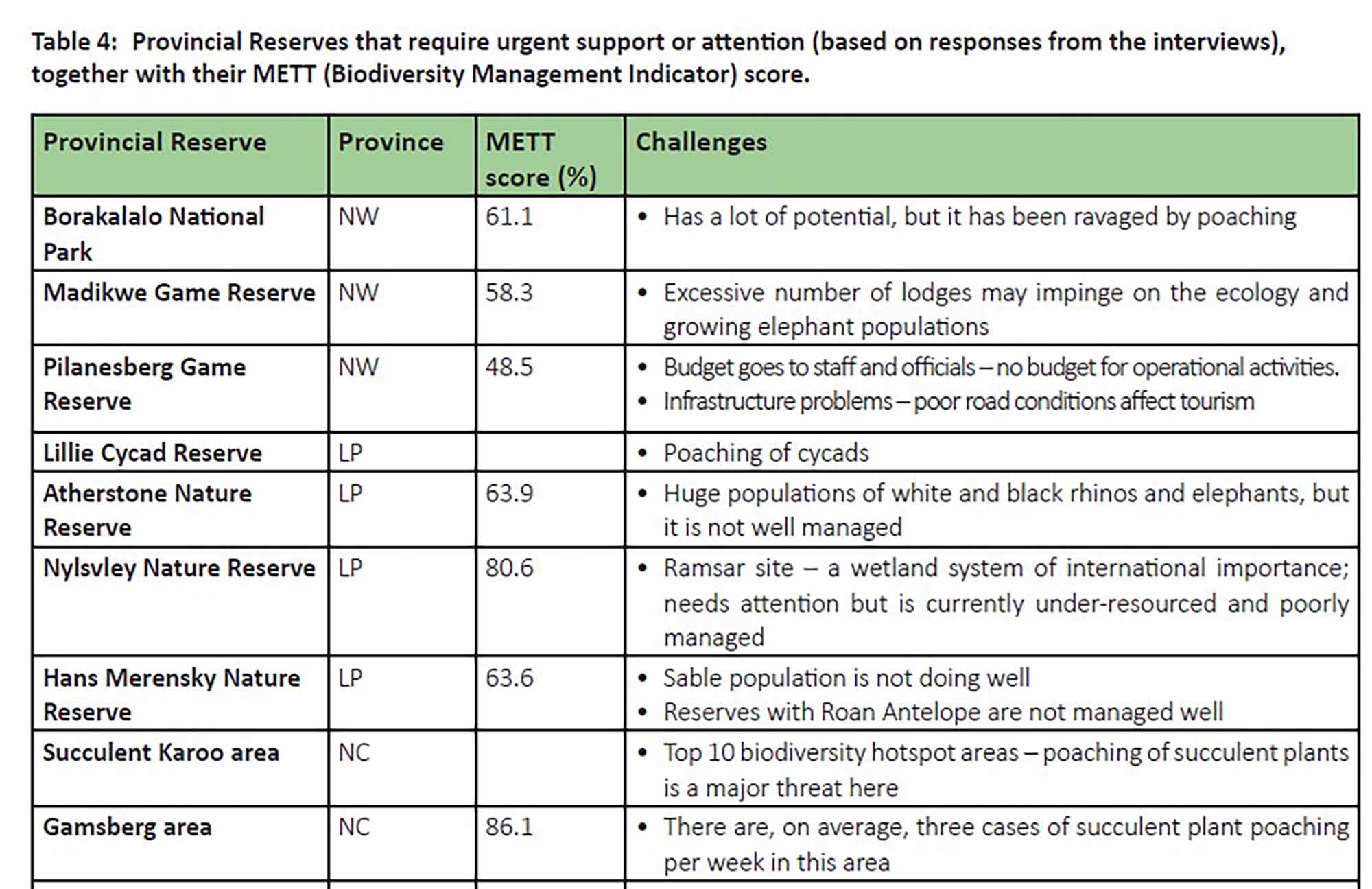
Examples of problems in Limpopo, North West and Northern Cape. (Table: Supplied)
So, what are the reasons for this bleak state of affairs? The report’s authors (Dr Tamanna Patel, Dr Oliver Cowan, Dr Ian Little, Dr Yolan Friedmann and Dr Andy Blackmore) summarise the three main problems as “a lack of critical skills and capacity; poor management implementation and inadequate budgets”.
Elsewhere in the report, in plainer language, they elaborate in more depth on how they came to these conclusions – which were based on existing data sources, a series of surveys and interviews with experts in reserve management, and a Management Effectiveness Tracking Tool developed by the World Wide Fund for Nature in collaboration with the World Bank.
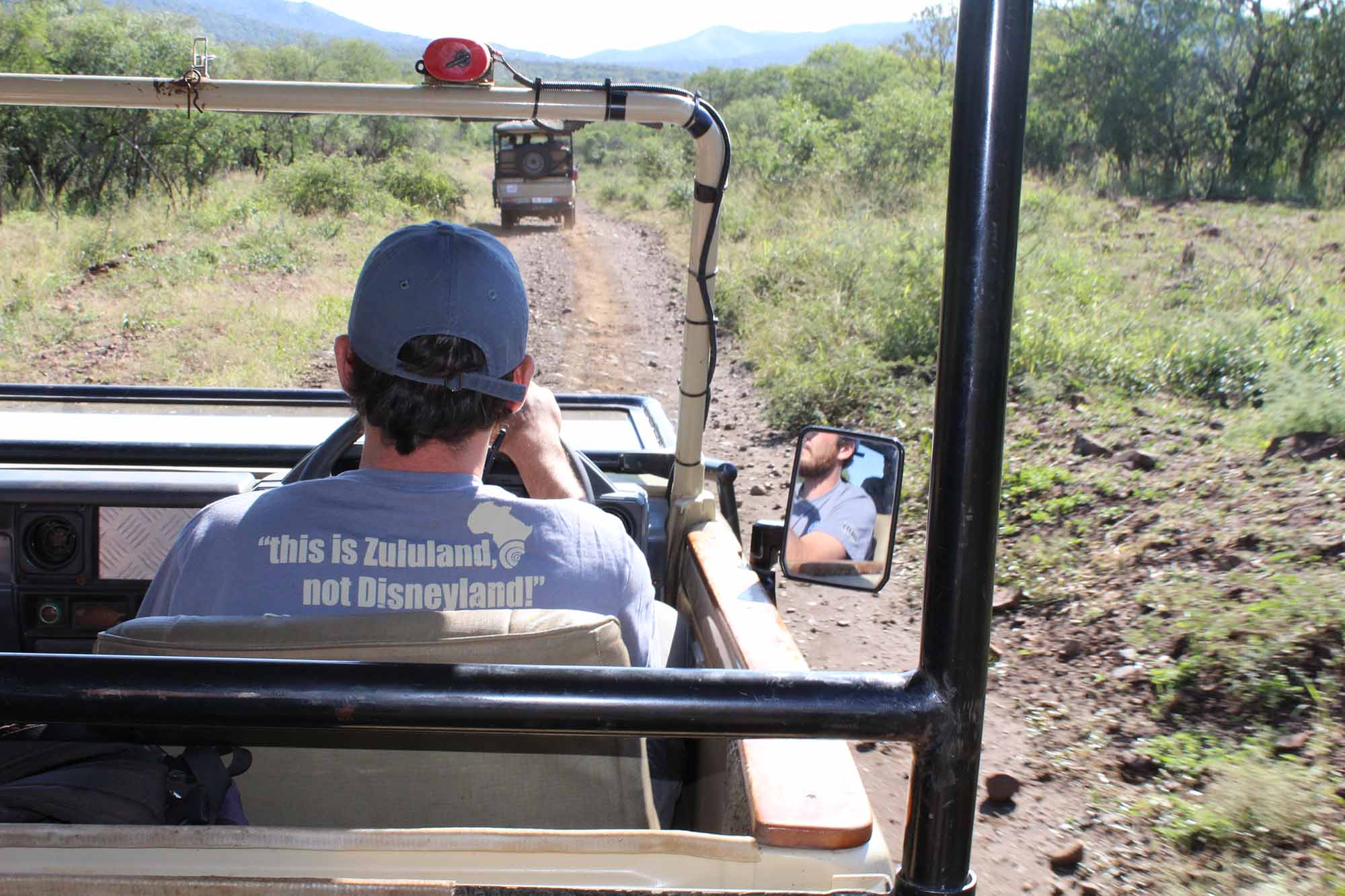
Nearly 40% of reserves in KZN (mainly run by Ezemvelo KZN Wildlife) scored poorly in a new assessment of the state of South Africa’s provincial wildlife parks and reserves. (Photo: Tony Carnie)
Worryingly, nearly 40% of reserves in KZN (mainly run by Ezemvelo KZN Wildlife) scored poorly based on this tracking tool assessment.
“It is important to note that this does not necessarily mean that reserves in KZN have worse management than other provinces, but that they submitted the most reports and may have a more stringent reporting approach,” the authors caution. Nevertheless, they believe the tracking tool provided useful insights into priority problem areas.
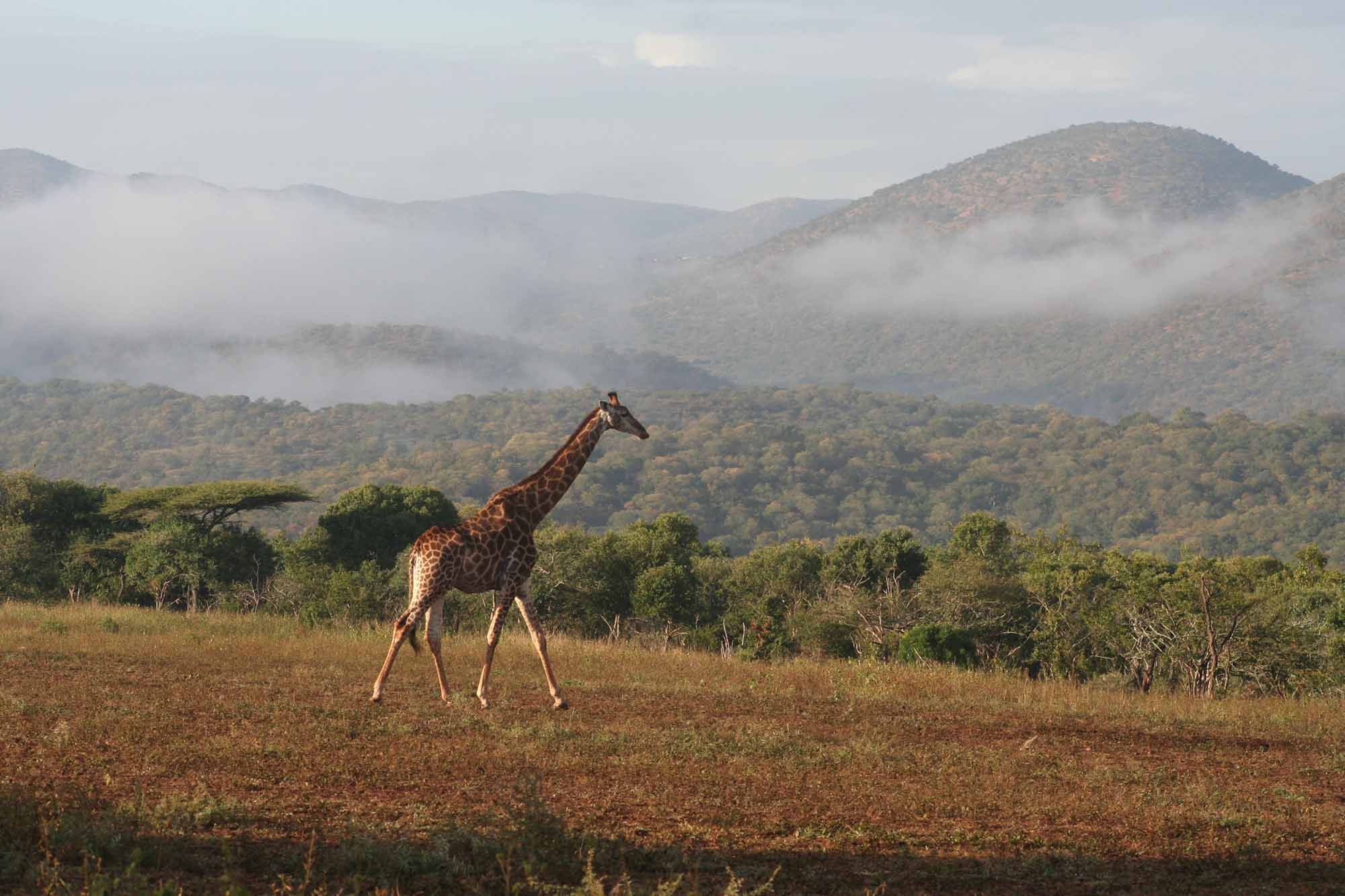
Despite their many scenic and wildlife attractions, tourism facilities are often poorly managed and run down in several provincial reserves. (Photo: Tony Carnie)
The most common problem in all provinces was the inadequate budgets for nature and wildlife conservation. In some reserves, as much as 80-90% of budgets were consumed by staff salaries – leaving little funding for day-to-day conservation.
Based on the tracking tool assessment, eight of the 22 best-scoring reserves were found in the Free State, but none of the reserves in the Northern Cape and North West provinces were listed with high scores.
Based on the opinions of the conservation experts who responded to a survey, Limpopo and Mpumalanga were the most poorly managed provinces from a conservation perspective, followed by KZN and the Eastern Cape.
“Conversely, the Western Cape was considered the best-managed province, rating the highest in the ‘well managed’ and ‘very well managed’ responses.”
The survey respondents also lamented the lack of capacity – including staff who were “not dedicated, motivated, or passionate about what they do”.
“Based on expert opinions, positions are often politically appointed rather than by individuals having expertise in the field… young incoming managers have often not benefited from working under and gleaning institutional knowledge from experienced managers. Political interference hinders reserve staff from fulfilling their conservation mandate.”
Some of these criticisms have been echoed by Div de Villiers, veteran conservation official of the Eastern Cape provincial department of environmental affairs.
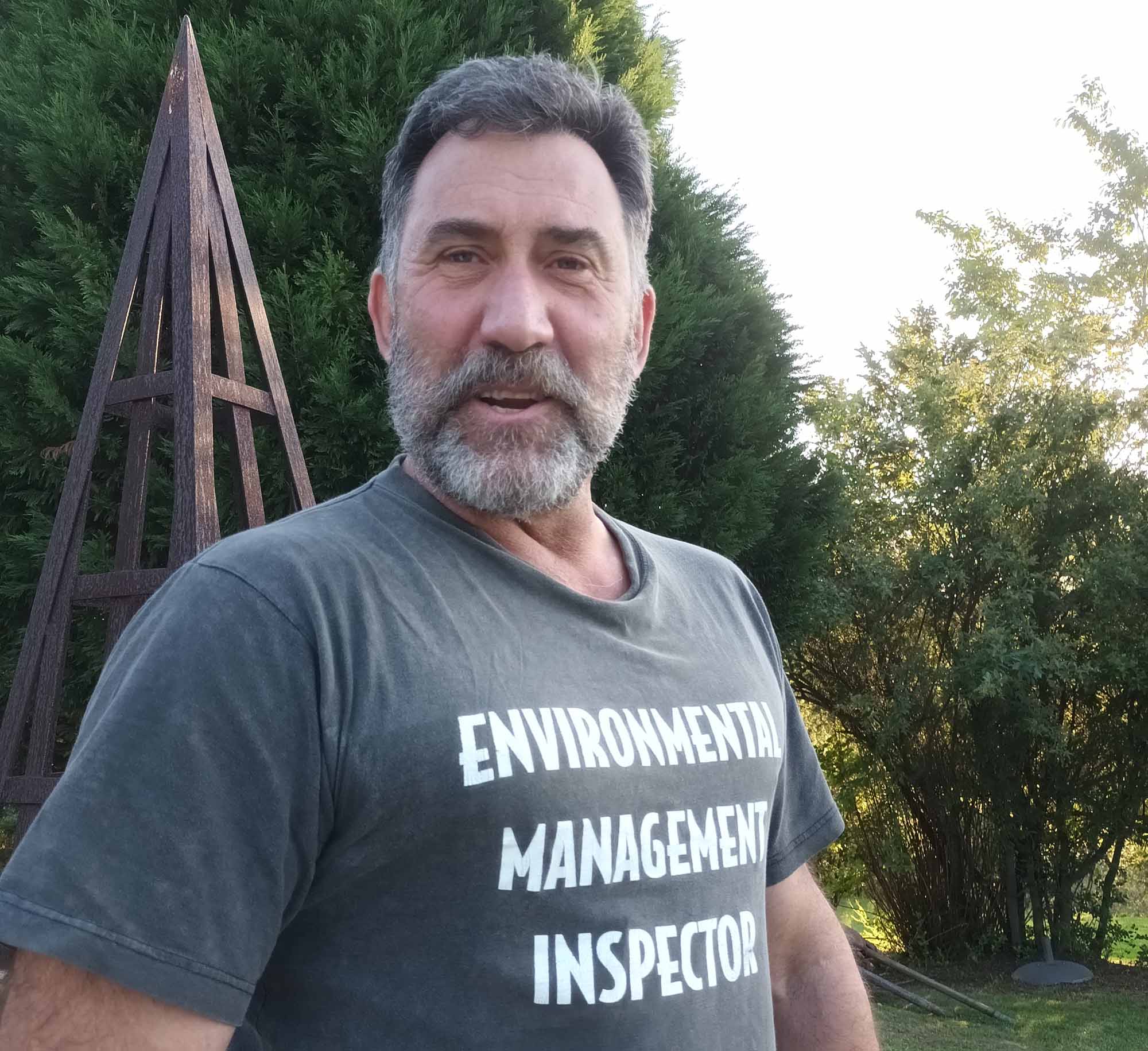
Div de Villiers. (Photo: Tony Carnie)
De Villiers, a senior member of the Green Scorpions environmental inspectorate, retired on 30 April after a 40-year career in nature conservation. He believes strong leadership and a passion for conservation are essential for effective conservation.
Reminiscing about his career in a series of Facebook posts last week, De Villiers recalled that he and most of his older colleagues were “committed to the cause and never joined conservation for the money”.
“There was no profession with poorer pay! We worked in the field daily, never stayed in hotels or B&Bs, and often slept in the veld next to our vehicles (sometimes in tents).”
“I worked with some excellent MECs including Smuts Ngonyama, Enoch Godongwana, Mcebisi Jonas and Oscar Mabuyane – who all supported our work.
“During those times, conservation projects flourished. We won court battles to conserve the Wild Coast, we had Ntsikeni proclaimed a Ramsar site, we had the backing to demolish unlawful coastal developments, we declared protected areas, we established an award-winning Special Investigation Unit… the list is long.
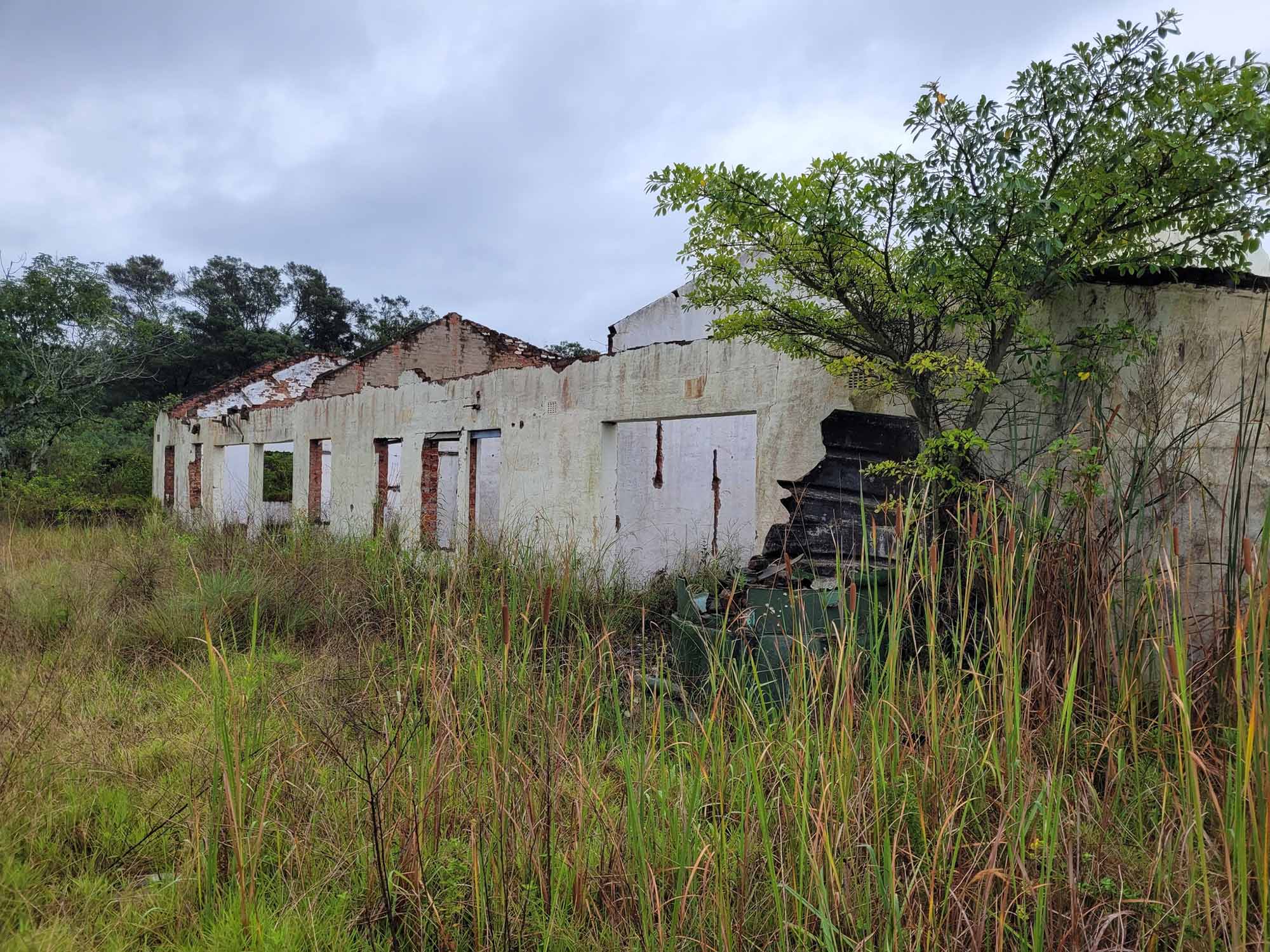
One of the derelict freshwater fish research buildings in the Amalinda Nature Reserve in the Eastern Cape, a collapse caused mainly by funding shortages. (Photo: Div de Villiers)
“Unfortunately, the wheels come off if there is no leadership, or if the morale of a team is broken because nobody is steering the ship. Leadership is more important than funds or resources (and we all know how important they are).
“A team works because it believes in a cause and because its members believe that their leaders support them,” he said, noting that his former department had now been without a chief director for two years.
According to the EWT report, there are high vacancy rates in protected areas in all provinces.
“In KZN, there have been significant personnel changes, with a progressive loss of key staff over the last 20 years – many experienced and skilled. There is no succession planning for the loss of these skilled staff, and vacant positions are not filled with experienced people, leading to the challenges of a staff comprising largely unqualified and inexperienced people.”
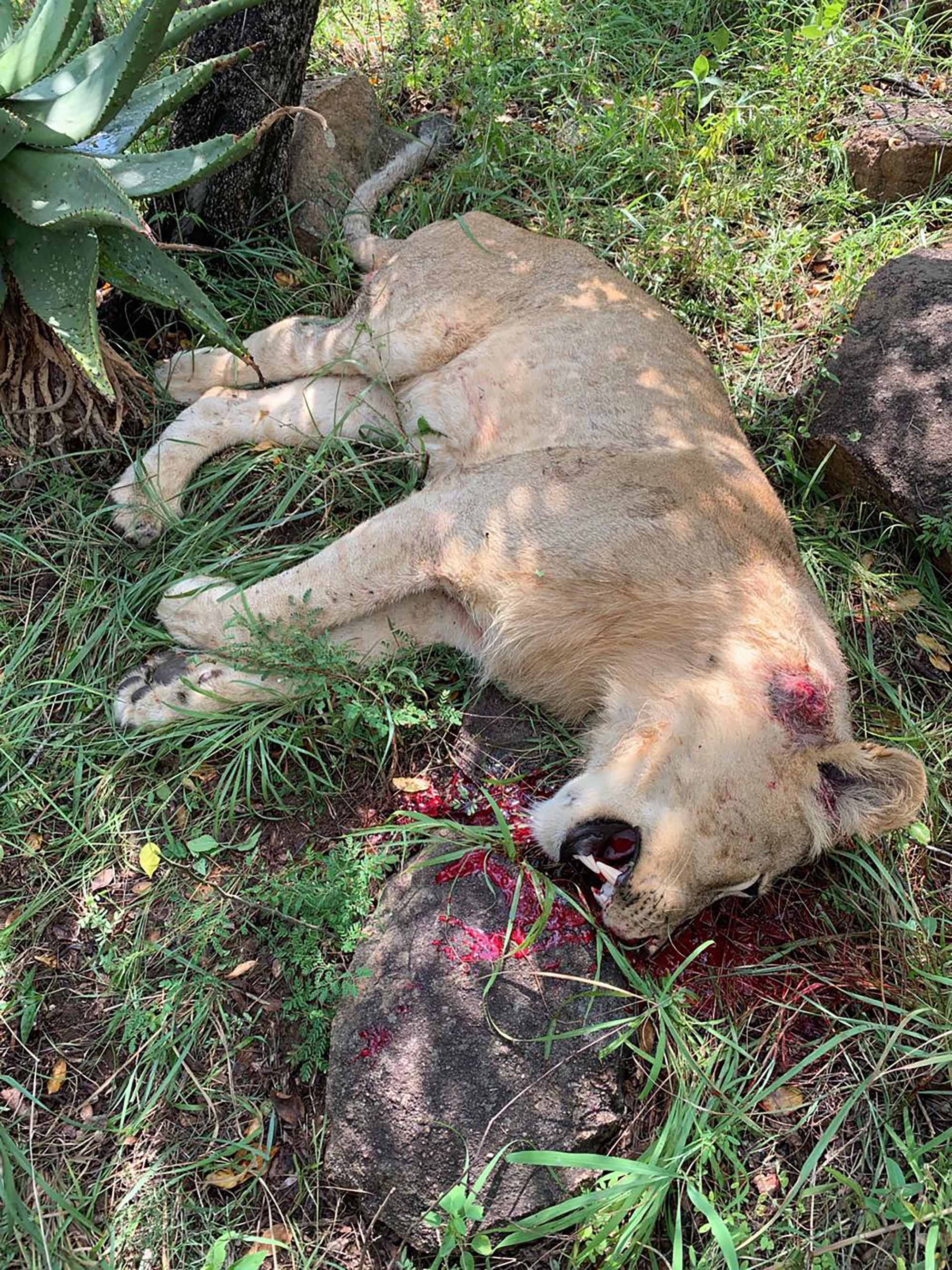
Several dangerous wildlife species have escaped from the Hluhluwe-iMfolozi Park because of collapsing fencing. This lion was shot and killed in the Melmoth area in March 2020. (Photo: Supplied)
On the question of poor funding, the report notes that conservation has to compete against a range of other pressing national priorities, including housing, healthcare, education, security and welfare needs.
“The adoption of funding models that centralise financial flows in government, and the gradual but significant decrease in government budget allocation to conservation efforts, have combined to put pressure on protected areas to generate the necessary funds for their management and protection.
“There is a fundamental risk that this income generation imperative will shift focus from environmental protection to commercial activities and place at risk the integrity of these protected areas.”
Yet, amid the doom and gloom, the EWT and survey respondents suggest that solutions are still possible to turn the situation around in poorly performing provinces.
The report suggests that several urgent changes and interventions are needed to turn around the future of these national assets.
Experienced staff
One of the top priorities should be appointing (and retaining) experienced staff.
A new recruitment process should also allow for the sourcing of “passionate and dedicated career conservationists”.
This process must also include park management boards to ensure that board members are effective, objective and committed – rather than political appointees.
“There is a desperate need and clear opportunity for targeted training and mentoring of existing staff and managers, which can be fulfilled internally and from external support.”
More money
Across all provinces, there are inadequate budgets for effective park management, with most government funding going to salaries, bonuses and human resources and very little allocated for maintenance and operational expenditure.
As examples, salaries and benefits for conservation staff in the Free State, Gauteng and Limpopo in 2016 were 64%, 66% and 65% of the expenditure, respectively, with the remaining budget being allocated to goods and services and capital expenditure. In KwaZulu-Natal, Mpumalanga and the Western Cape, 56%, 62% and 55%, respectively, were allocated to personnel costs.
Over recent years, there have been no inflation-linked budget increases to maintain reserves, and in many cases, budgets have been cut significantly, leading to the dilapidated state of roads and infrastructure in many parks.
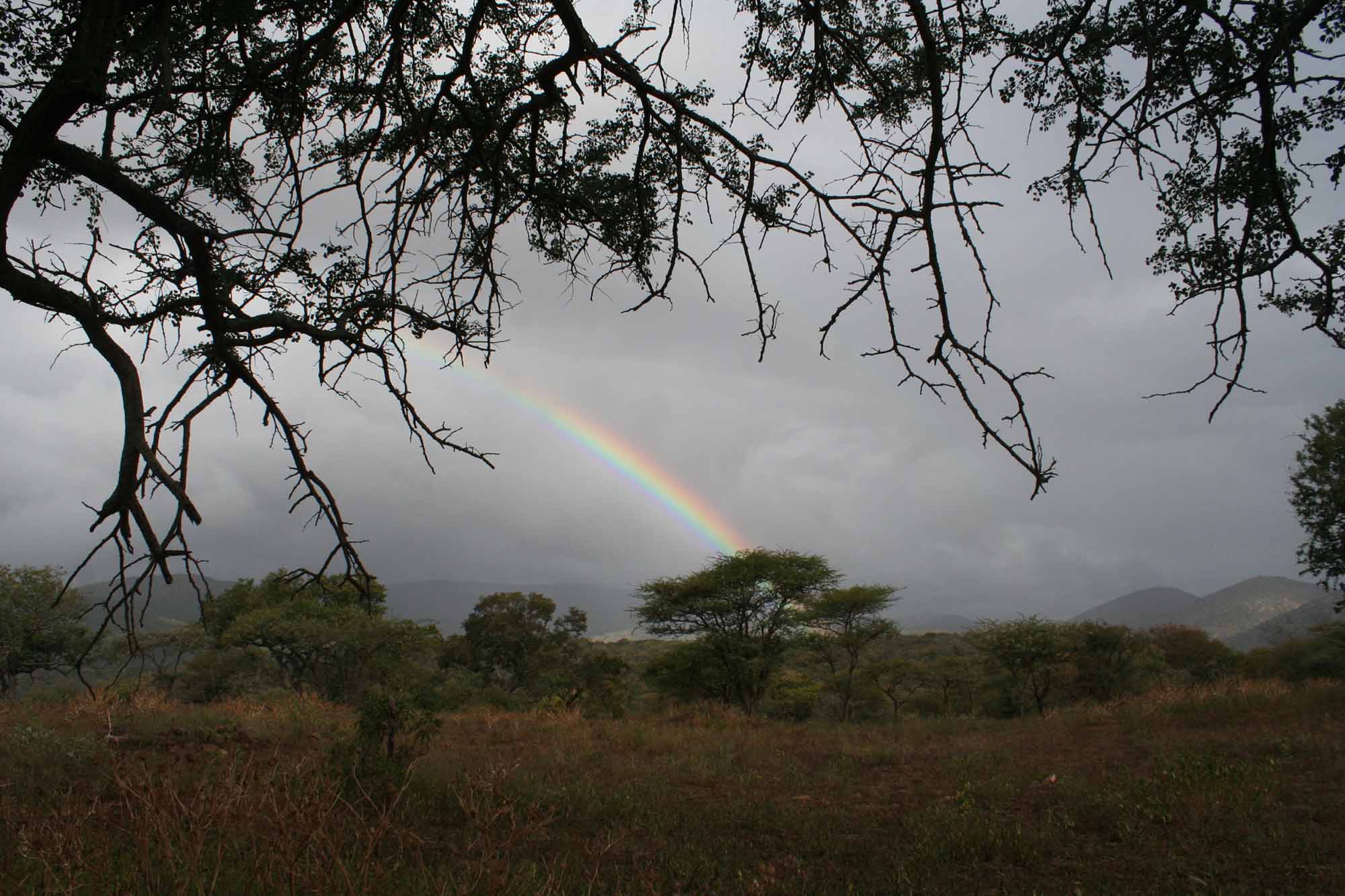
Is there still a rainbow shining over the future of South Africa’s provincial park estate, which covers more than 3 million hectares? (Photo: Tony Carnie)
The general perception is that parks are supposed to make money, which is often a misunderstanding, as some critical, protected areas will never be able to generate income, although they are critical for biodiversity conservation.
“Options must be explored for provincial reserves to benefit from the income they generate through whatever means possible, so they can be incentivised to generate income and reinvest it into their operating budgets. National Treasury needs to be engaged on this as reserves need to benefit from the income they generate.”
Ultimately, however, the political heads of provincial conservation departments should be pushing more strongly to provide adequate finance to parks and reserves to fulfil their conservation mandate for current and future generations.
Tourism and infrastructure
Poorly maintained infrastructure (from roads to rondavels) also needs to be refurbished urgently to develop the tourism potential of provincial reserves
“Many provincial reserves have below-standard infrastructure, accommodation, and under-resourced catering facilities. These challenges play a significant role in limiting the number of tourists visiting an area.
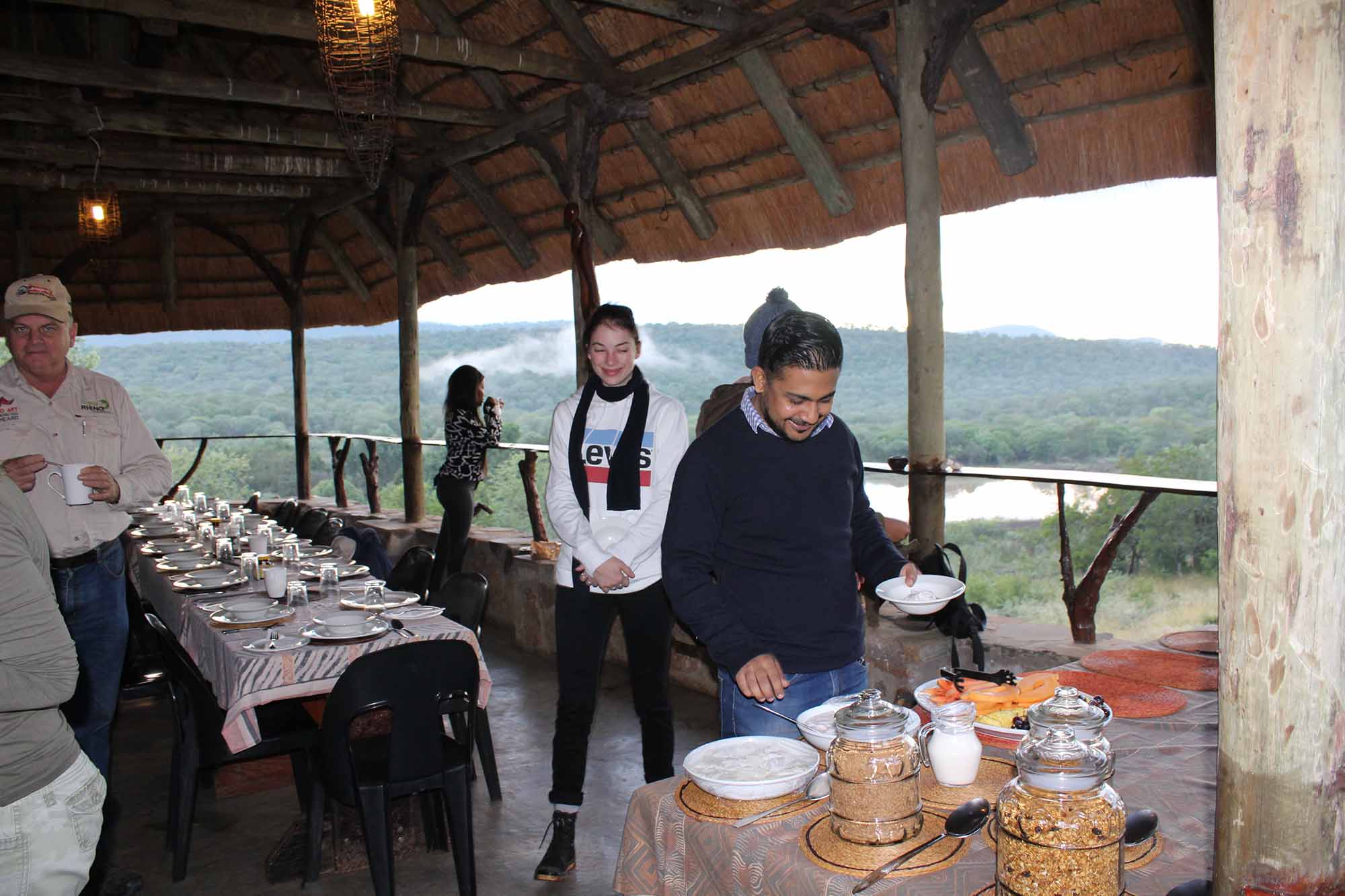
Many provincial reserves have below-standard infrastructure, accommodation or catering facilities — limiting the number of tourists visiting these areas. (Photo: Tony Carnie)
“These issues can only be addressed through greater infrastructure investment or strategic partnerships with dedicated tourism operators. Many of them have the potential to generate income through tourism but require capital investment to upgrade facilities before this is even possible.
“Even if reserves receive funding to upgrade tourist infrastructure, the problem lies with maintaining this infrastructure over time, as the current financial model within provincial systems does not allow income generated through tourism to be channelled back to reserve maintenance.”
New private sector and community partnerships
Provinces should also consider partnerships and collaborations with the private sector, NGOs and communities to raise more money and to build mutually beneficial relationships between parks and local communities.
These options could include private/public partnership options and co-management agreements. This would enable provinces to co-opt management partners to bring expertise and capital to improve the management effectiveness and tourism potential of important conservation areas.
This approach could entail contractual agreements such as long-term leases to tourism operators or co-management agreements with neighbouring private or communal farming or tourism enterprises.
An example of such collaborations could include the partnership between Ezemvelo KZN Wildlife and Wildlife ACT for animal monitoring work and WildTrust, particularly the WildOceans component, for Marine Protected Area management.
One of Ezemvelo’s major game surveys in Hluhluwe-iMfolozi Park was done through an agreement with Earthwatch, which uses a paying volunteer model to cover the entire survey cost.
Climate and biodiversity funding
Because many smaller or isolated reserves have no potential or capacity to generate income from eco-tourism, provincial governments and park managers should explore new “sustainable finance” options such as e-carbon markets, offset agreements and biodiversity credits.
This could include voluntary carbon markets – carbon emission reduction programmes or nature-based solutions within the agriculture, forestry and other land use sectors to earn carbon revenue for the landowner and management authority.
“Voluntary carbon markets offer long-term financial returns for effective ecosystem management. These have specific relevance for buffer areas on private and communally owned land neighbouring provincial reserves.
Conservation lobbying
Finally, the EWT report calls on provinces and other relevant stakeholders to build a case for the importance of higher budgets for provincial protected areas.
“The gradual but consistent reduction in fiscal allocations for our provincial conservation agencies is a core driving factor in the degradation and collapse of most of the struggling provincial reserves in South Africa.
“The conservation sector must cooperate to form a united front to lobby for a reverse in this worrying trend should South Africa’s provincial park networks have any chance of continuing to support its mandate of biodiversity and ecosystem service protection.” DM/OBP






















 Become an Insider
Become an Insider
Superb article. I fear for the future of our parks if this corrupt ANC mob stay in power .
Unfortunately not everybody sees animals and wildlife as important. It is up to those who see the value and importance of our ecosystems in terms of SA and globally, in addition to the economic benefits, to keep the pressure on this utterly useless government and hold them to account in maintaining and preserving our natural national treasures!
I agree with what the EWT has concluded but, unfortunately, they have to remain politically correct. There is very little mention of corruption and the ridiculous procurement processes where many reserves pay preferred BEE suppliers way over the market price. The fact that all tourism revenue has to go to central government is a total disincentive. I have a good knowledge of Hluhluwe and have watched the deterioration of Hilltop over the last years. The huts are dilapidated, the swimming pool is often out of action, the shop has no stock, there is often no fuel at the filling station and the food at the restaurant is unappetising at best.
The EWT did mention in passing the “willingness to cooperate” of management as being a potential problem. This is the elephant in the room (pun intended). None of the politically appointed top officials will be willing to give up any of their authority or power and lose out on all their lucrative sidelines.(this is not a criticism of the many dedicated staff in the field)
For large reserves like Pilanesberg or HIP, they can only be saved by letting an organisation like African Parks manage them. Both of them have huge tourist potential which will never be realised by the current administration and conservation will be the winner.